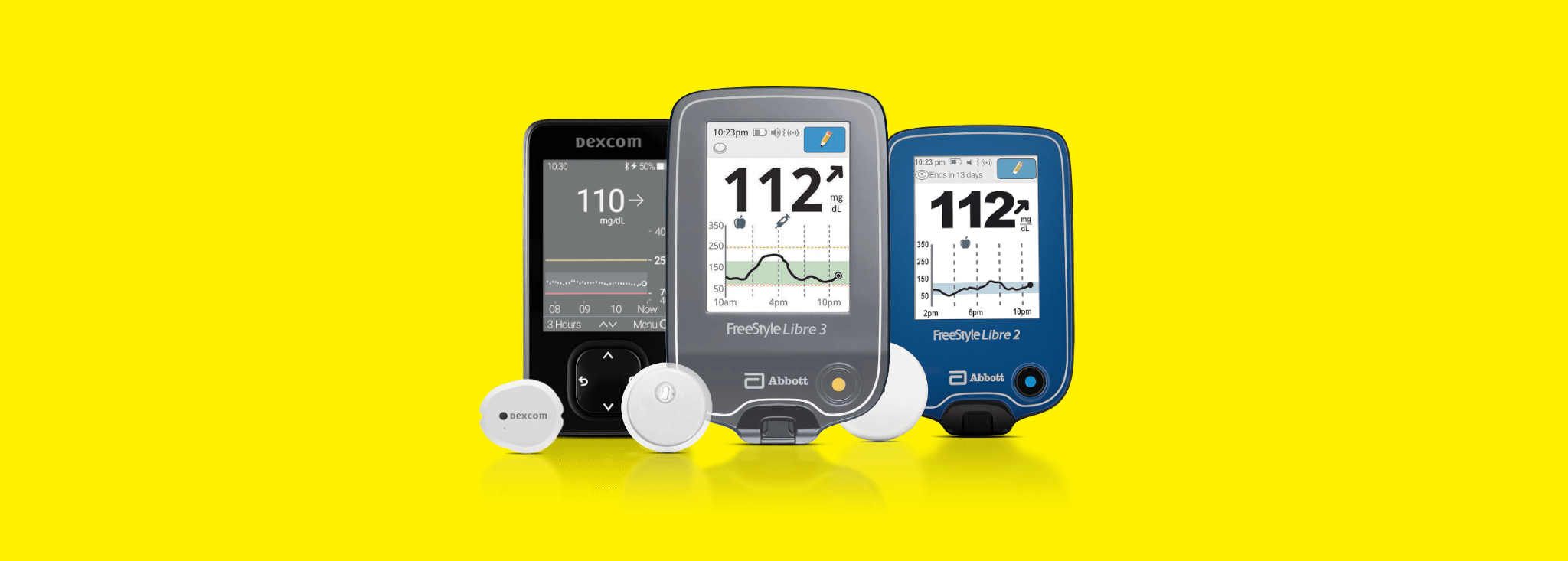Beyond Type 1’s Continuous Glucose Monitor— ‘CGM’ —Chart
Written by: Daniel Trecroci
2 minute read
June 10, 2024
Continuous glucose monitors (CGMs) have revolutionized how diabetes is managed, making life easier and healthier for millions. If you’re wondering about CGM options, the handy CGM chart below will help answer your questions.
CGMs provide a better way to keep tabs on glucose levels. They deliver real-time readings, helping users spot trends and manage their blood sugar more effectively. They can also reduce the risk of complications by alerting you when levels are too high (hyperglycemia) or too low (hypoglycemia).
CGM basics
Most CGMs are made up of three parts: a sensor inserted under the skin, a transmitter placed on the skin, and a receiver—or your smartphone—that collects the data.
These devices are easy to apply, often with a simple applicator, and many are waterproof for use while swimming or showering.
Plus, they’ll sound alarms to notify you if your blood sugar falls outside the target range.
Which CGM is right for me?
Here are some questions to think about when considering your CGM options:
- Will my insurance cover CGMs?
- How often will I have to change the sensors?
- Will I need to purchase a handheld reader, or is the device compatible with my smartphone?
- Do I want a CGM to connect to my insulin pump?
With the help of this CGM chart (see below), we can answer all of your questions.
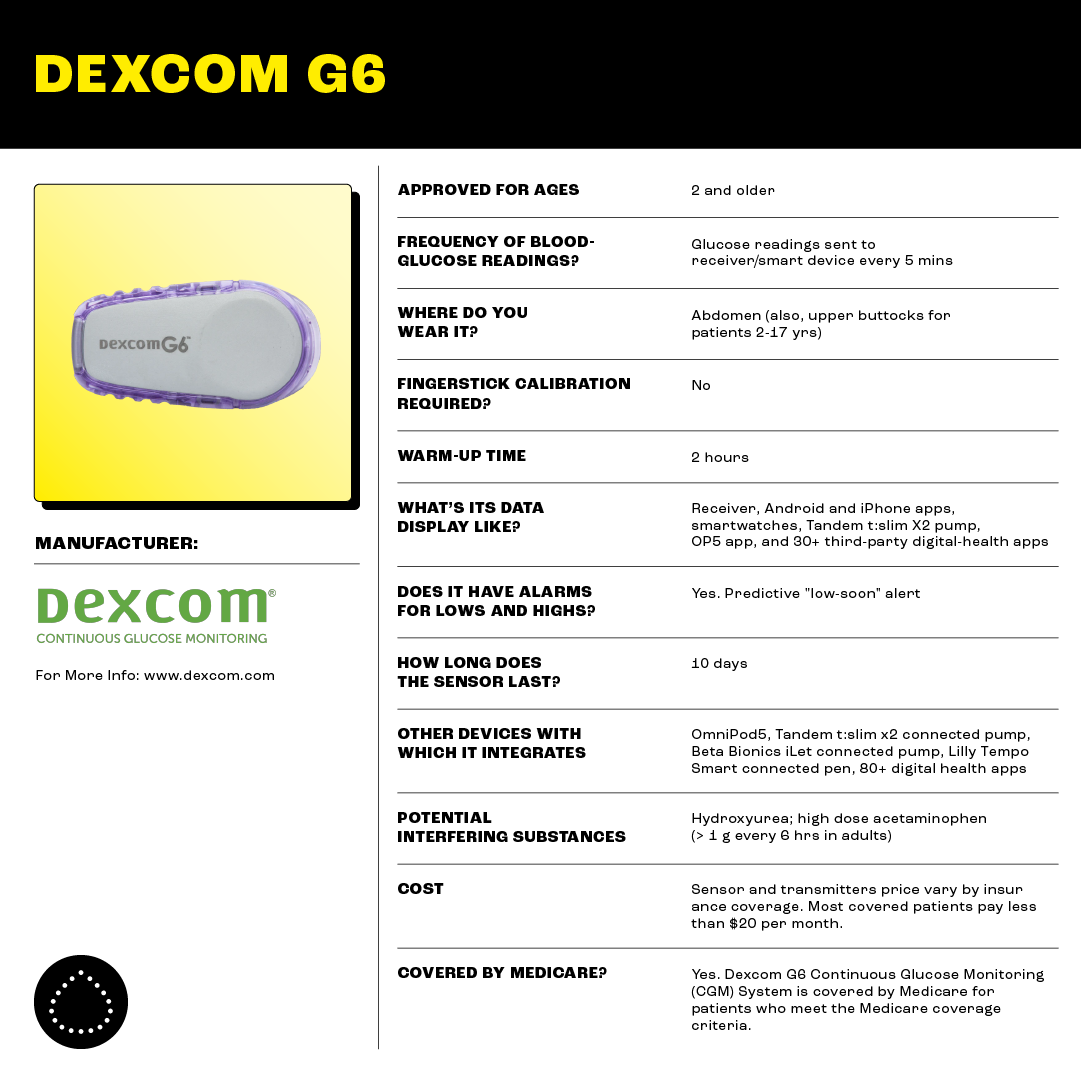
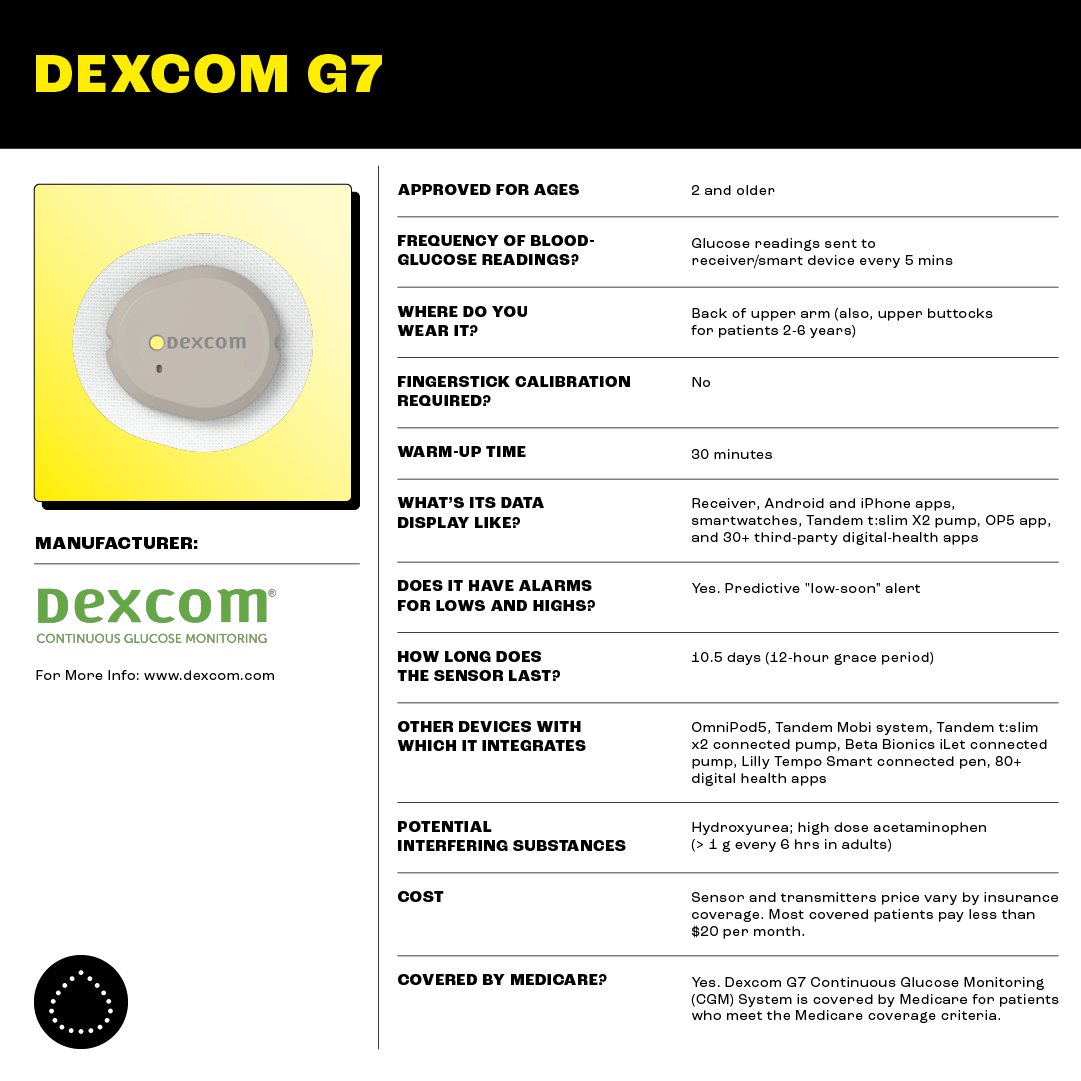

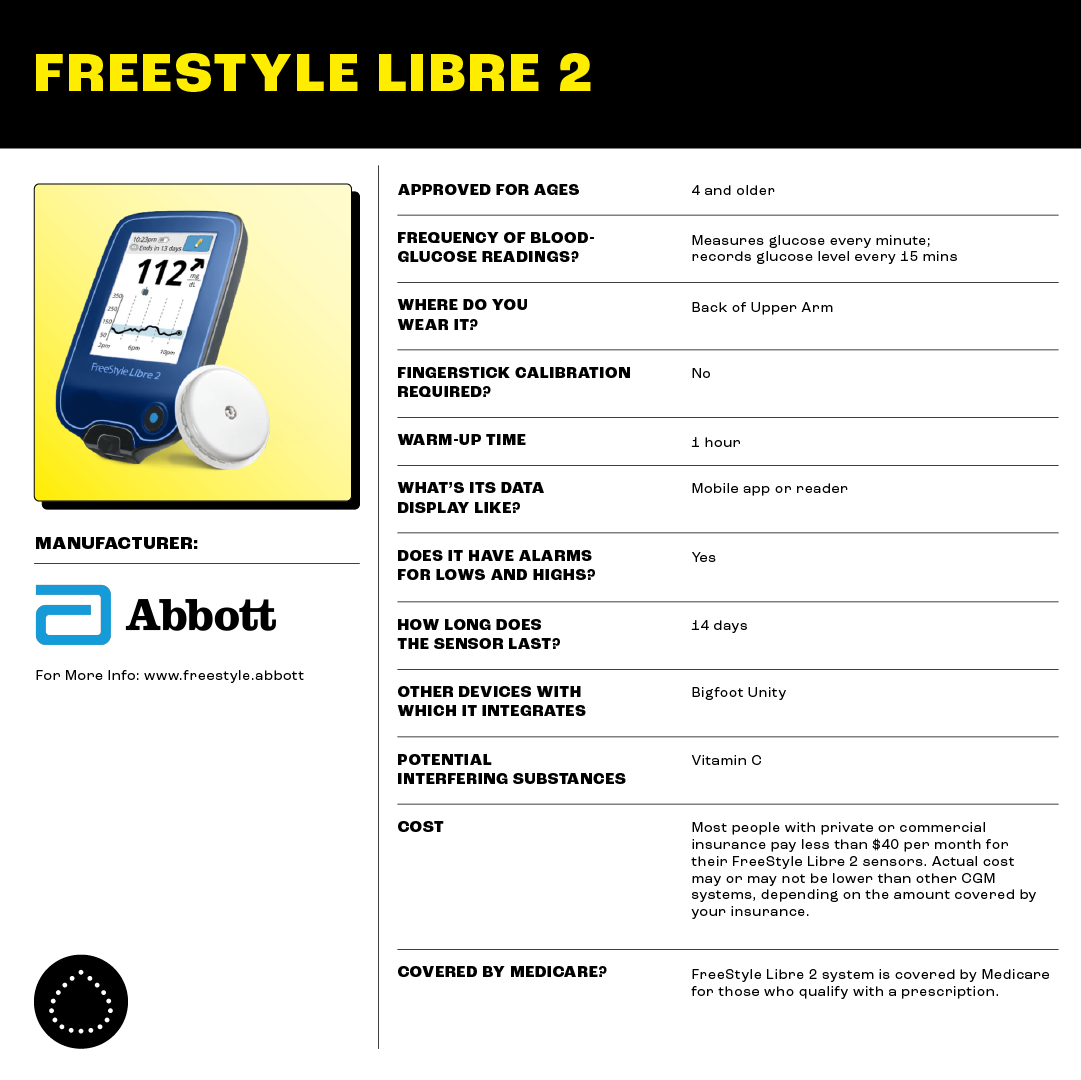
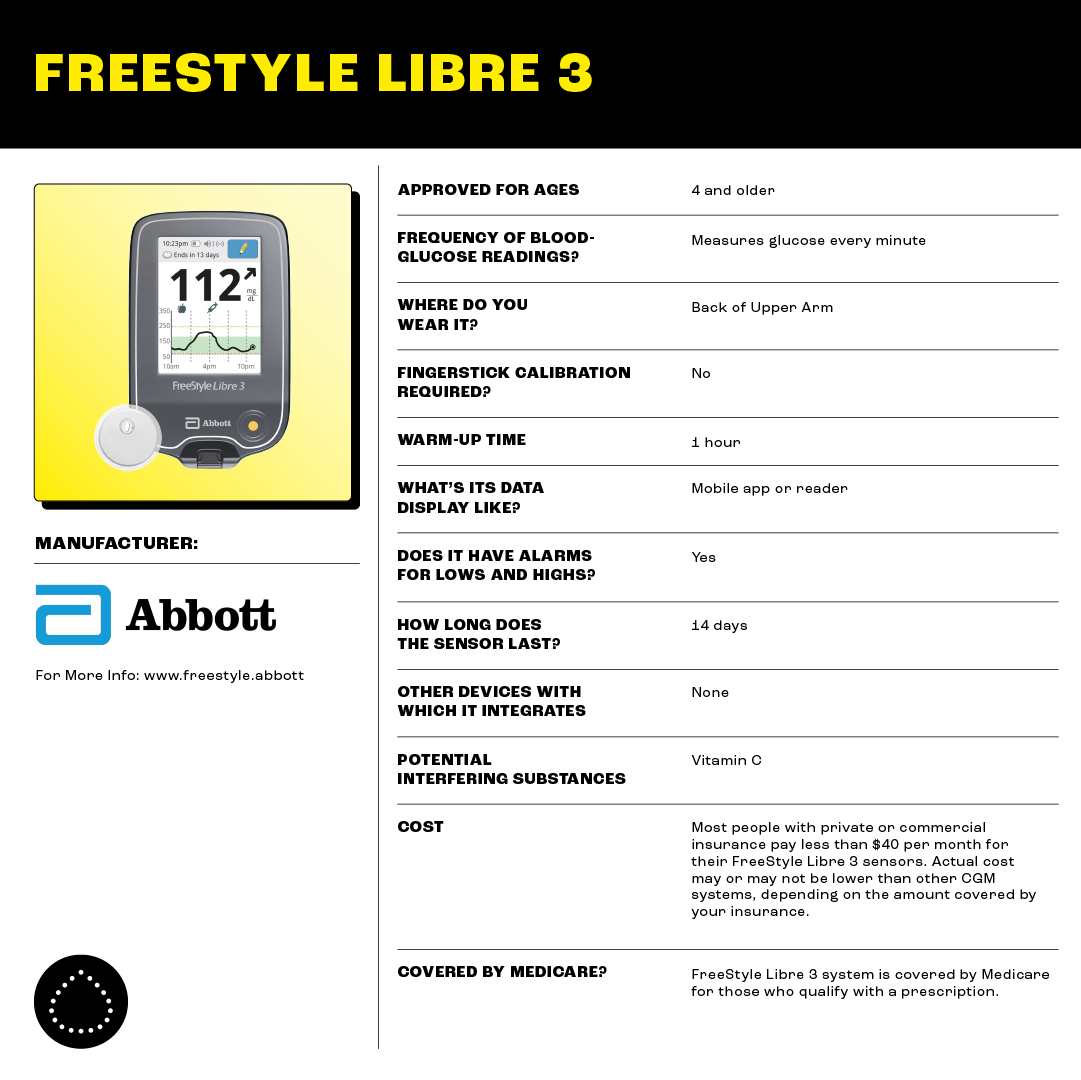
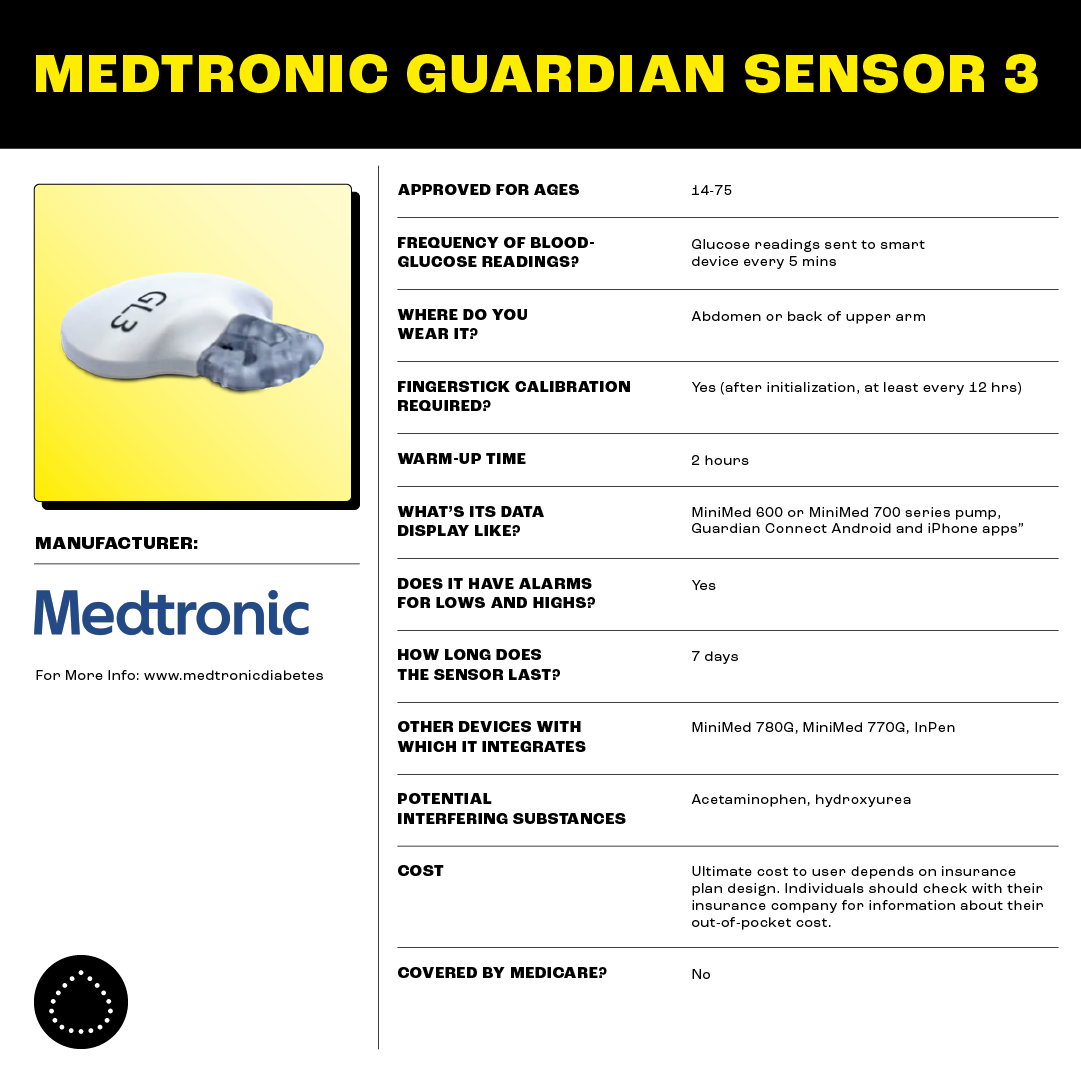

This content was made possible by Dexcom, an active partner of Beyond Type 1.
Beyond Type 1 maintains editorial control over its content.
Related Resources

Exercise can be tricky when you have diabetes, whether you're walking the dog or running...
Read more

On May 29, 2024, Tandem Diabetes Care and Dexcom, Inc. shared exciting news: the Tandem...
Read more

Being newly diagnosed with type 1 diabetes can feel overwhelming. You’re learning about insulin, food,...
Read more

